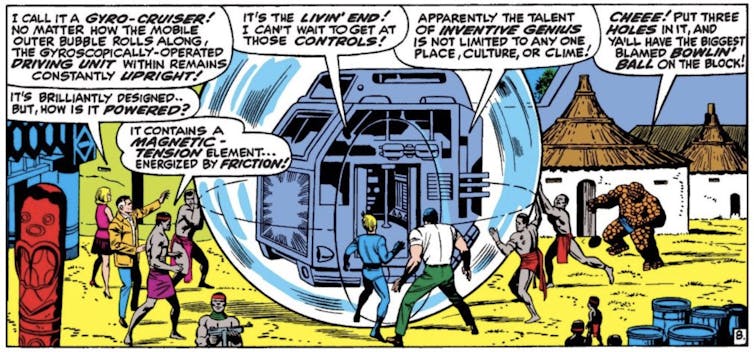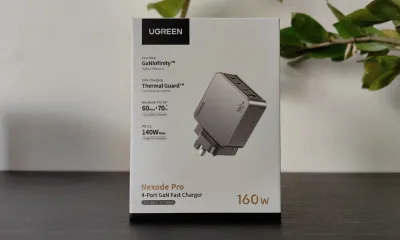Featured
Huawei Mate 20 Pro Launched With Ultra Wide-Angle Triple Cameras

Huawei Consumer Business Group (CBG) today unveiled the HUAWEI Mate 20 Series, one of the most highly anticipated smartphone series of the year. The HUAWEI Mate 20 Series is powered by Huawei’s densest and highest performing system on chip (SoC) to date—the Kirin 980. Manufactured with the advanced 7nm process incorporating the powerful Cortex-A76-based CPU and Mali-G76 GPU, the SoC offers improved performance and an unprecedented smooth user experience. The new 40W HUAWEI SuperCharge, 15W HUAWEI Wireless Quick Charge and large batteries work in tandem to provide users with the best battery life.
The Matrix Camera System includes Leica Ultra Wide Angle Lens that lets users not only see wider, but also closer with its new macro distance capability. The Hyper Optical Pattern on the glass back plays with light and shadows, producing an iridescent optical effect that is immediately captivating. The Matrix Camera System adopts the iconic Four-Point Design that exudes personality, giving the device a unique visual identity that is recognizable even at a distance. The HUAWEI Mate 20 Series is shipped with the highly customized Android P-based EMUI 9 operating system, on which consumers can enjoy all productivity and entertainment features easily and conveniently with a few simple taps and swipes.

Available in 6.53-inch, 6.39-inch and 7.2-inch sizes, the HUAWEI Mate 20 Series encompasses four devices: HUAWEI Mate 20, HUAWEI Mate 20 Pro, HUAWEI Mate 20 X and PORSCHE DESIGN HUAWEI Mate 20 RS. “Smartphones are an important entrance to the digital world. The HUAWEI Mate 20 Series is designed to be the best ‘mate’ of consumers, accompanying and empowering them to enjoy a richer, more fulfilled life with their higher intelligence, unparalleled battery lives and powerful camera performance,” said Richard Yu, CEO of Huawei Consumer BG.
The SoC at the core of smartphones has a determining factor in a device’s performance and efficiency. Manufactured with the cutting-edge 7nm technology process, the SoC fits 6.9 billion transistors within a die the size of a fingernail. Compared to Kirin 970, the latest chipset is equipped with CPU that is 75 percent more powerful, GPU that is 46 percent more powerful and NPU that is 226 percent more powerful. Furthermore, the efficiency of the components has also been elevated: the CPU is 58 percent more efficient, GPU is 178 percent more efficient, and the NPU is 182 percent more efficient.
The Kirin 980 is the world’s first commercial SoC to use the Cortex-A76-based cores. Huawei has innovatively designed a three-tier architecture that consists of two ultra-large cores, two large cores and four small cores. This grants the CPU the flexibility to allocate the optimal amount of resources to heavy, medium and light tasks for unprecedented levels of efficiency, simultaneously improving the performance of the SoC while enhancing the battery life. The Kirin 980 is also the industry’s first SoC to be equipped with Dual-NPU, granting it higher On-Device AI processing capability to support any and all AI applications.
HUAWEI Mate 20 Pro is the world’s first smartphone to support the 4.5G LTE Cat. 21 standard, allowing consumers to experience download speeds of up to 1.4Gbps. It also supports the world’s fastest Wi-Fi connection speeds–2GB footage requires only 10 seconds to download. The top-end flagship also supports dual-band (L1+L5) GPS positioning technology. The AI GPS Satellite Selection technology enhances the positioning accuracy across a wide range of scenarios.
Besides superb performance, the HUAWEI Mate 20 Series also features groundbreaking improvement on battery life. The HUAWEI Mate 20 Pro houses a large, high-density 4200mAh battery, and supports 40W HUAWEI SuperCharge, which gives the device 70 percent charge in 30 minutes. The safety of the technology is certified by TÜV Rheinland. Moreover, HUAWEI Mate 20 Pro supports 15W HUAWEI Wireless Quick Charge, the industry’s fastest wireless charging solution, and Wireless Reverse Charge, which enables the device to work as a power bank for selected electronic devices supporting wireless charging.
The HUAWEI Mate 20 X supports an ultra-large 5000mAh battery, and is equipped with a revolutionary HUAWEI super cool system that uses a combination of graphene film and vapor chamber to deliver outstanding cooling performance. With the cooling system in place, the CPU and GPU embedded in HUAWEI Mate 20 X can remain at full throttle for an extended period of time and deliver the smoothest and most satisfying gaming experience to consumers. The HUAWEI super cool system also marks the first time graphene is utilized to cool smartphones.
Building on the foundation of HUAWEI P20 Series’ camera system, Huawei augmented the HUAWEI Mate 20 with a powerful addition—16mm Leica Ultra Wide Angle Lens. This wider perspective creates a sense of spaciousness and a three dimensional effect to the images. The new camera system also supports macro distance, which produces crisp images of objects that are placed as close as 2.5cm from the lens. The added ultra-wide angle lens and macro support completes the feature set of the camera system, elevating it to a truly all-round camera that is ready to capture any and all action.
The HUAWEI Mate 20 Pro is equipped with a 40MP main camera, a 20MP ultra wide-angle camera, and an 8MP telephoto camera. Together, the trio of lenses supports a wide range of focal lengths (equivalent to the performance of a 16-270mm zoom lens), enabling it to mimic the results from professional cameras. The HUAWEI Mate 20 Series also features an AI Portrait Color video mode. Using AI, the HUAWEI Mate 20 Series can isolate human subjects and desaturate the colors around them to dramatically highlight the person. AI Spotlight Reel identifies clips with a shared theme and auto-generates a montage, made entirely of highlights.
HUAWEI Mate 20 Pro and PORSCHE DESIGN HUAWEI Mate 20 RS both support 3D Face Unlock. The solution quickly and securely authenticates users within 0.6s at a false acceptance rate of below 1/1,000,000. Using the 3D Depth Sensing Camera System located at the front, the two devices can accurately read the facial features of a subject and recognize even small details. Besides user authentication, this suite of sensors also enables the portrait beautification effects to be realized in a more natural and effective way.
The HUAWEI Mate 20 Series comes with EMUI 9.0, a smart operating system based on Android P. Through AI self-learning algorithms, an integrated and granular resource allocation system, and a highly optimized Android environment, EMUI 9 delivers an “evergreen” experience—it remains smooth even through extended use. EMUI 9.0 incorporates a unified, ergonomic design and a streamlined settings menu. The new gesture navigation support allows users to effortlessly interact with their devices using just taps and swipes. It also introduces new AI features that enable the HUAWEI Mate 20 Series to perform or enhance a range of tasks from object identification to food calorie counting. Using 3D Live Object Modeling, consumers can even create a fun digital avatar to dance or interact with.
As a key pillar supporting Huawei’s all-connected, all-scenario ecosystem, HUAWEI Share 3.0 delivers a revolutionary improvement in device interconnection, allowing users to transfer files between smartphones and PC. This is an innovative, Huawei-proprietary solution that enables device interconnectivity. It revolutionizes the way people transfer images and videos: all it takes is one tap to establish a connection between a smartphone and PC for easy and fast file sharing. As an expression of the HUAWEI Mate Series DNA, all devices carry a FullView display with a high screen-to-body ratio. Compactly engineered, every device from the 6.39-inch HUAWEI Mate 20 Pro to the 7.2-inch HUAWEI Mate 20 X can be comfortably used with a single hand.
The grace of natural elements is captured on the design of the HUAWEI Mate 20 Series. In particular the HUAWEI Mate 20 Pro’s chassis is curved on all eight sides—a marvel to behold, and a pleasure to hold in the hand. For the PORSCHE DESIGN HUAWEI Mate 20 RS, Huawei and Porsche Design ingeniously combined race track elements with premium materials to create a device that exudes elegance and offers a firm, ergonomic grip. The Matrix Camera array on the back of the HUAWEI Mate 20 Series features a four-point design with the three cameras and sensor encircled in a polished metal frame, producing an avant-garde look that is both bold and distinct.
The flagship series comes in a new Emerald Green colorway, which is as brilliant as its namesake gemstone. The Hyper Optical Pattern on the glass back uses a complex hairline pattern to produce an iridescent effect that is not only highly durable, but also makes the device easy to grip and fingerprint resistant. The devices retain a clean look even when they have been used extensively. The new HUAWEI Mate 20 Series, as well as HUAWEI WATCH GT, HUAWEI Band 3 Pro will go on sale in countries including the U.K., France, Italy and United Arab Emirates soon.
The HUAWEI Mate 20 (4GB + 128GB configuration) will have a price tag of EUR 799 and the HUAWEI Mate 20 (6GB + 128GB configuration) will have a price tag of EUR 849 from 16th October, 2018. The HUAWEI Mate 20 Pro (6GB + 128GB configuration) will have a price tag of EUR 1049 from 16th October, 2018. The HUAWEI Mate 20 X (6GB + 128GB configuration) will have a price tag of EUR 899 from 26th October, 2018.

Featured
Editor’s Pick: Our Top Choices for Smartphones in the UAE and Why the HUAWEI nova 10 Pro is the Best Choice

We all know that choosing a new smartphone can somewhat be tricky, right? For some, the camera is the most important thing, while others may prioritise design, battery life, charging speeds, or the overall user experience. In this article, we picked up a couple of top-notch phones, or as we like to call them “trendy flagship phones” which you can get today, in the UAE and we found out that the HUAWEI nova 10 Pro steals the show here’s why:
HUAWEI nova 10 Pro
The HUAWEI nova 10 Pro inherits the HUAWEI nova Series’ unique aesthetic and sophisticated design, in addition to upgrades to its front camera capabilities with newly added features.
The design of the HUAWEI nova 10 Pro is inspired by the interstellar universe and the city chic aesthetic. The HUAWEI nova 10 Pro comes in an astonishing Colour No. 10 in addition to Starry Black colourways. Colour No. 10 depicts exquisite and elegant aesthetics. Combining the chic metallic silver colour with the golden Star Orbit Ring and Icon, the 3D curved display of the phone is complemented, sparkling with layer upon layer to showcase fascinating colour changes under different light and shadow. Through high-precision CCD positioning, the Star Orbit Icon has adapted a double colour plating process into the Star Orbit Craft, highlighting the fashion tastes of the younger generation.

When we say this is probably the phone with the best selfie camera out there – we mean it! From selfies to vlogging, the HUAWEI nova 10 Pro comes packed with some innovative features when it comes to the front camera technology: It sports high-quality dual front camera lenses. One lens features the industry’s first front-facing 60MP Ultra-Wide Autofocus Camera, supporting 100-degree wide angle and 4K video quality, which offers excellent resolution and light sensitivity.
Additionally, the front-facing 8MP Portrait Close-up Camera, another industry’s first, supports 2X optical zoom and up to 5X digital zoom, expanding the limits of human perception and bringing you the ultimate close-up portrait experience. For outdoor shots with wide fields of view, users can freely adjust the zoom to easily shoot 0.7X~5X zoom videos on top of leveraging the front camera’s powerful dual autofocus capabilities, capturing scenic images surrounding.

With upgraded autofocus capabilities of the dual front cameras, the HUAWEI nova 10 Pro can intelligently switch the focus of different subjects within the camera, and through the Showcase Focus function, allows the subjects to be clearly displayed even in vlogs. Meanwhile, it can utilise multiple cameras of the smartphone to shoot simultaneously, offering a multi-camera shooting experience with the combination of dual front cameras, both front and back cameras, as well as picture-in-picture shooting, all while portraying the fine details of the subject’s face, make-up, and accessories.
To cope with battery life challenges arising from high-frequency application use scenarios such as videography and gaming, Huawei also continues to lead the innovation in fast charging technology. The HUAWEI nova 10 Pro supports the 100W HUAWEI SuperCharge that is firstly equipped with the new Turbo Mode, breaking the power consumption limits for instant charging. It only takes 10 minutes to charge the phone up to 60 percent, while fully charging the phone in just 20 minutes – the same duration it takes to load up a new game! The battery capacity largely determines the battery life of the phone. Packing in a larger battery capacity in a slim body, the HUAWEI nova 10 Pro is equipped with a 4500mAh battery.
Samsung Galaxy S22
The first thing that you will notice about this phone is that it sports an upgrade in materials, with an aluminium band around the middle and a glass back. The materials may have been altered but the design is the same, right down to the contour cut look for the rear camera array in which the three camera lenses are stacked vertically.

The selfie camera on the front of the phone is a 10MP sensor. Battery life and charging speed is an areas you might want to focus on a bit with the Samsung Galaxy S22. The phone comes with a smaller battery size when compared to last year’s model the Samsung Galaxy S21. Sporting a 3700mAh battery capacity (which is also smaller than the battery size on the HUAWEI nova 10 Pro), and that needs 30 minutes to charge up to 60% with a 25W, wired Samsung Fast Charging.
The Choice is Yours!
Every year, we expect smartphones to make disruptive innovations. Even though reality cannot keep up with our imaginations, smartphones are getting better and better. In this guide, we definitely think that it HUAWEI nova 10 Pro sits at the top and is the go-to choice if you are looking to change smartphones this year!
Entertainment
‘Black Panther’ and its Science Role Models Inspire More Than Just Movie Awards

Written by Clifford Johnson, University of Southern California – Dornsife College of Letters, Arts and Sciences
It has been said many times that the Marvel movie “Black Panther” is an important landmark. I’m not referring to its deserved critical and box office success worldwide, the many awards it has won, or the fact that it is the first film in the superhero genre to be nominated for best picture at the Academy Awards.
Instead, I’m focusing on a key aspect of its cultural impact that is less frequently discussed. Finally a feature film starring a black superhero character became part of the Marvel Cinematic Universe – a successful run of intertwined movies that began with “Iron Man” in 2008. While there have been other superhero movies with a black lead character – “Hancock” (2008), “Blade” (1998), “Spawn” (1997) or even “The Meteor Man” (1993) – this film is significant because of the recent remarkable rise of the superhero film from the nerdish fringe to part of mainstream culture.
Huge audiences saw a black lead character – not a sidekick or part of a team – in a superhero movie by a major studio, with a black director (Ryan Coogler), black writers and a majority black cast. This is a significant step toward diversifying our culture by improving the lackluster representation of minorities in our major media. It’s also a filmmaking landmark because black creators have been given access to the resources and platforms needed to bring different storytelling perspectives into our mainstream culture.
2017’s “Wonder Woman” forged a similar path. In that case, a major studio finally decided to commit resources to a superhero film headlined by a female character and directed by a woman, Patty Jenkins. Female directors are a minority in the movie industry. Jenkins brought a new perspective to this kind of action movie, and there was a huge positive response from audiences in theaters worldwide.
And beyond all this, “Black Panther” also broke additional ground in a way most people may not realize: In the comics, the character is actually a scientist and engineer. Moreover, in the inevitable (and somewhat ridiculous) ranking of scientific prowess that happens in the comic book world, he’s been portrayed as at least the equal of the two most famous “top scientists” in the Marvel universe: Tony Stark (Iron Man) and Reed Richards (Mr. Fantastic). A black headlining superhero character written and directed by black artists is rare enough from a major studio. But making him – and his sister Shuri – successful scientists and engineers as well is another level of rarity.
Scientists On Screen
I’m a scientist who cares about increased engagement with science by the general public. I’ve worked as a science adviser on many film and TV projects (though not “Black Panther”). When the opportunity arises, I’ve helped broaden the diversity of scientist characters portrayed onscreen.


I’ve also recently published a nonfiction graphic book for general audiences called “The Dialogues: Conversations about the Nature of the Universe.” Its characters include male and female black scientists, discussing aspects of my own field of theoretical physics – where black scientists are unfortunately very rare. So the opportunity that the “Black Panther” movie presents to inform and inspire vast audiences is of great interest to me.
The history and evolution of the Black Panther character and his scientific back story is a fascinating example of turning a problematic past into a positive opportunity. Created in 1966 by Stan Lee and Jack Kirby, he’s the first black superhero character in mainstream comics, originally appearing as a guest in a “Fantastic Four” Marvel comic. As a black character created and initially written by nonblack authors, guest-starring in the pages of a book headlined by white characters, he had many of the classic attributes of what is now sometimes controversially known as the “magical negro” in American cultural criticism: He ranked extremely highly in every sphere that mattered, to the point of being almost too unreal even for the comics of the time.
Black Panther is T’Challa, king of the fictional African country Wakanda, which is fathomlessly wealthy and remarkably advanced, scientifically and technologically. Even Marvel’s legendary master scientist – Reed Richards of the superhero team Fantastic Four – is befuddled by and full of admiration for Wakanda’s scientific capabilities. T’Challa himself is portrayed as an extraordinary “genius” in physics and other scientific fields, a peerless tactician, a remarkable athlete and a master of numerous forms of martial arts. And he is noble to a fault. Of course, he grows to become a powerful ally of the Fantastic Four and other Marvel superheroes over many adventures.

The key point here is that the superlative scientific ability of our hero, and that of his country, has its origins in the well-meaning, but problematic, practice of inventing near or beyond perfect black characters to support stories starring primarily white protagonists. But this is a lemons-to-lemonade story.

Black Panther eventually got to star in his own series of comics. He was turned into a nuanced and complex character, moving well away from the tropes of his beginnings. Writer Don McGregor’s work started this development as early as 1973, but Black Panther’s journey to the multilayered character you see on screen was greatly advanced by the efforts of several writers with diverse perspectives. Perhaps most notably, in the context of the film, these include Christopher Priest (late 1990s) and Ta-Nehisi Coates (starting in 2016), along with Roxane Gay and Yona Harvey, writing in “World of Wakanda” (2016). Coates and Gay, already best-selling literary writers before coming to the character, helped bring him to wider attention beyond normal comic book fandom, partly paving the way for the movie.
Through all of the improved writing of T’Challa and his world, his spectacular scientific ability has remained prominent. Wakanda continues to be a successful African nation with astonishing science and technology. Furthermore, and very importantly, T’Challa is not portrayed as an anomaly among his people in this regard. There are many great scientists and engineers in the Wakanda of the comics, including his sister Shuri. In some accounts, she (in the continued scientist-ranking business of comics) is an even greater intellect than he is. In the movie, T’Challa’s science and engineering abilities are referred to, but it is his sister Shuri who takes center stage in this role, having taken over to design the new tools and weapons he uses in the field. She also uses Wakandan science to heal wounds that would have been fatal elsewhere in the world.

If They Can Do It, Then Why Not Me?
As a scientist who cares about inspiring more people – including underrepresented minorities and women – to engage with science, I think that showing a little of this scientific landscape in “Black Panther” potentially amplifies the movie’s cultural impact.
Vast audiences see black heroes – both men and women – using their scientific ability to solve problems and make their way in the world, at an unrivaled level. Research has shown that such representation can have a positive effect on the interests, outlook and career trajectories of viewers.
Improving science education for all is a core endeavor in a nation’s competitiveness and overall health, but outcomes are limited if people aren’t inspired to take an interest in science in the first place. There simply are not enough images of black scientists – male or female – in our media and entertainment to help inspire. Many people from underrepresented groups end up genuinely believing that scientific investigation is not a career path open to them.
Moreover, many people still see the dedication and study needed to excel in science as “nerdy.” A cultural injection of Black Panther heroics helps continue to erode the crumbling tropes that science is only for white men or reserved for people with a special “science gene.”
The huge widespread success of the “Black Panther” movie, showcasing T’Challa, Shuri and other Wakandans as highly accomplished scientists, remains one of the most significant boosts for science engagement in recent times.
Featured
TP-Link to Showcase Neffos X20 and X20 Pro at MWC 2019

Neffos, TP-Link’s sub-brand for smartphones, will be exhibiting at the Mobile World Congress 2019 in Barcelona, Spain, on February 25. The theme for the year’s biggest technology convention for mobile products and innovations is intelligent connectivity, which is in line with TP-Link’s slogan of “Faster Wi-Fi, Better Signal Phone, Smarter Home.”
At the MWC 2019 tech show, Neffos will display Neffos P1 as well with a built-in projector feature for beaming HD content onto a large wall. Neffos P1, which adds a laser projector that can throw a picture as large as 200 inches wide onto a wall or any flat surface in high resolution.
For the first time, the company will also showcase its new Neffos X20 and X20 Pro flagship phones. The two models are expected to hit the market sometime in June, along with Neffos’ own NFUI 9.0 software based on the Android 9.0 Pie operating system. As NFUI 9.0 hasn’t launched yet, the X20 and X20 Pro will be the first devices to run the latest user interface out of the box.




















